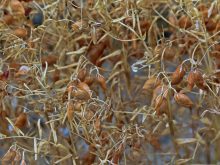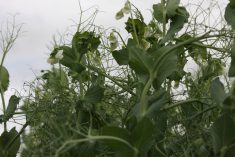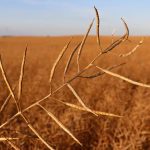Agriculture Canada anticipates chickpeas will be the one pulse crop that generates decent returns in 2006-07.
The department has prepared a series of crop budgets for the coming year. One shows that large kabuli chickpea growers in Saskatchewan’s brown soil zone can expect a $90 per acre net return after covering their variable costs.
“Canadian seeded area (of chickpeas) is forecast to increase due to good prices and relatively high expected net returns,” the department said in its Jan. 20 Bi-weekly Bulletin.
Agriculture Canada predicts 242,000 acres of chickpeas in 2006-07, up 24 percent over last year’s plantings.
Read Also

Message to provincial agriculture ministers: focus on international trade
International trade stakeholders said securing markets in the face of increasing protectionism should be the key priority for Canada’s agriculture ministers.
It would be the first time the crop has topped the 200,000 acre mark since 2002-03.
Some analysts believe the estimate is conservative given the crop’s economics.
CGF Brokerage and Consulting expects 400,000 acres of chickpeas, a forecast that is a little more than double the 195,000 acres seeded in 2005-06 and that is driven in a large part by strong prices.
New crop bids for 10 millimetre chickpeas have been offered at about 35 cents per pound delivered, said CGF broker Merv Berscheid.
“The world supply is off a bit. That’s why we’re seeing relatively strong prices.”
Former Agricore United pulse trader Martin Chidwick, who is now vice-president of Canadian operations for Bissma Pacific Inc., said there is no doubt growers want to seed 400,000 acres.
“The intentions are there.”
However, he wonders if there is enough quality seed to allow that level of chickpea plantings or whether prices will be high enough come spring to support 400,000 acres.
If Mexico and India harvest big crops, contract prices could back off and 300,000 acres would be more likely, Chidwick said.
He thinks growers are looking for an average price of 30 cents per lb. for the entire range of their kabuli crop but the trade is reluctant to make that commitment until it sees how the situation plays out in Mexico and India.
In its Jan. 13 pulse market outlook, Louis Dreyfus Canada called chickpeas “the brightest star” in the pulse galaxy but the company warned that soaring acreage in Saskatchewan could lower prices.
“As long as producers keep the increases to reasonable amounts, demand should be adequate to keep the market from falling too hard in 2006-07,” the company said.
Ray McVicar, special crops specialist with Saskatchewan Agriculture, didn’t have a specific acreage number but he said more chickpea acres are inevitable.
“From what I’ve heard there are growers who are getting interested in the crop again.”
However, he noted that the kabuli budget in Saskatchewan Agriculture’s Crop Planning Guide 2006 was more subdued than Agriculture Canada’s budget.
The guide sees a net return of $62.46 per acre over variable expenses for nine mm kabulis. The difference was due in part to lower yield projections based on Saskatchewan’s 10-year average.
McVicar emphasized that planting decisions should not be based solely on projected returns.
“The large kabuli budgets are pointing towards positive returns. Unfortunately, chickpea is still a very high risk crop for Saskatchewan.”















